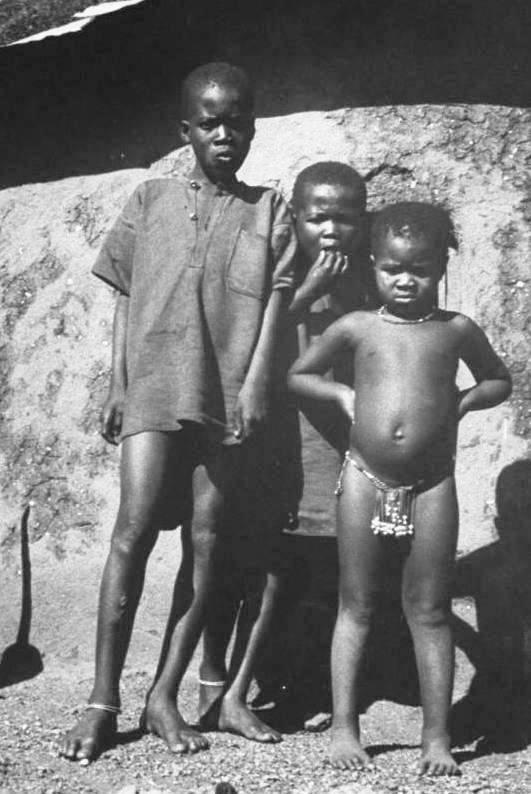
Figure 1.--Here three Zulu boys in in 1960. They are wearing both traditional and western-style clothing. Notice the onle boys with a beaded IsiNene. Men wear IsiNene made of sewn animal skin patches. |

|
The Zulu today mostly wear Western clothing. The Zulu people are very proud of their traditions and on festive occassions and holidays wear traditional clothing. Until the 1960s the Zulus largely wore traditional clothing, but have since largely made a transition to Western clothing. Mow people that usually wear European clothing will wear the traditional styles, especially for folks festivals. High school girls will replace their their school uniforms and dance bare-breasted. he Zulu have a range of identifiable traditional clothing for both men and women. This includes a variety of destinctine garments. Several items convery status. The leopard is a particularly revered animal--the king of predators and only Zulus of elevated social status wear leopard skin. Married men wear headbands An induna may only wear one headband, but the king may wear multiple headbands. The "amaShoba" are cow tails which men wear on their upper arms and below the knees to give the appearance of larger physique. The "IsiNene" is the front apron and is made of coin sized circular skin patches sewn closely together to add weight and cover the front. The "iBeshu" is the rear apron made from calf skin (stillborn or dead calves). Active young men wear them to knee length while older men may wear them to the ankle. The "inJobo" consist of long animal skins which are worn on the hips. Beads are very important in Zulu clothing, especially for women. Women do give men beaded items they have made. Bead work has been described as "the pride of the Zulu nation". Their beadwork encompasses a symbolic language that includes reprimands, warnings, and love messages. Younger children wear little clothing. Mothers may do beadwork for them. Boys as they grow older begin to wear items like their fathers. Some items are reserved for those boys who nhave passed through manhood rites.
Navigate the Boys' Historical Clothing South African pages:
[Return to the Main Zulu page]
[Return to the Main African tribal page]
[Return to the Main South African page]
[S.A. school uniforms]
[S.A. choirs]
[S.A. scouts]
Navigate the Boys' Historical Clothing Web Site:
[Return to the South African population]
[Introduction]
[Activities]
[Biographies]
[Chronology]
[Clothing styles]
[Countries]
[Bibliographies]
[Contributions]
[FAQs]
[Glossaries]
[Images]
[Links]
[Registration]
[Tools]
[Boys' Clothing Home]
